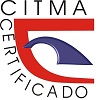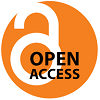The Ecuadorian high school curriculum: a necessary study for change
The Ecuadorian high school curriculum: a necessary study for change
Keywords:
Curriculum, Ecuadorian high school, historical development, curriculum reformAbstract
Currently, the social, economic and political development of a country is influenced by its educational currents and political principles that are defined in a solid, concise and clear educational curriculum, which is essential to guide the future of a country that emerges from formal education. This article aims to critically analyze the development of the Ecuadorian high school curriculum, through a qualitative phenomenological methodology, symbolic interactionism with an emphasis on the History of Education based on argumentative temporal periodization that leads to deductive reflection of the findings. Among the results obtained, the various historical milestones that reflect changes in educational policy, pedagogical approaches and social needs are presented within the convergent, divergent and innovative aspects that have emerged throughout this evolution. The comparison of Ecuadorian education with other educational systems (Colombia, Peru and Chile), indicates that Ecuador shares common objectives such as: inclusion and curricular improvement, although it faces unique challenges related to its socioeconomic context; Finally, a review of the results of the 2023 Ser Estudiante tests reveals shortcomings in the achievement levels reached in all areas of study assessed. In conclusion, having an efficient and effective curriculum is essential to improving educational quality and preparing students to face the challenges of the 21st century.
Downloads
References
Álvarez García, A. (2023). Estudio crítico del desarrollo histórico de los enfoques de la formación del Instructor de Arte en el período de 1959 hasta 2018. https://doi.org/10.5281/zenodo.10433328
Anguera, M. (1986). La investigación cualitativa. EDUCAR, 10, 23-50. https://doi.org/10.5565/rev/educar.461
Arcos Cabrera, C., & Espinosa, B. (Eds.). (2008). Desafíos para la educación en el Ecuador: Calidad y equidad (1a. ed). FLACSO. https://biblio.flacsoandes.edu.ec/libros/digital/59642.pdf
Arellano, A. (2016). Antecedentes históricos del origen y evolución del Currículum. Universidad Pedagógica Nacional. https://www.gestiopolis.com/antecedentes-historicos-del-origen-evolucion-del-curriculum/
Castro, F. (1981). Educación y revolución (6. ed). Editorial Nuestro Tiempo. https://ru.iiec.unam.mx/2308/1/EducacionYRevolucion_.pdf
Chuquilin Cubas, J, & Zagaceta Sarmiento, M. (2017). El currículo de la educación básica en tiempos de transformaciones: los casos de México y Perú. Revista mexicana de investigación educativa, 22(72), 109-134. Recuperado en 31 de marzo de 2025, de http://www.scielo.org.mx/scielo.php?script=sci_arttext&pid=S1405-66662017000100109&lng=es&tlng=es.
Coro, M. (2024). La evolución histórica de las reformas y actualizaciones curriculares implementadas en el sistema educativo Ecuatoriano. prezi.com. https://prezi.com/p/ba4stxndg-2c/la-evolucion-historica-de-las-reformas-y-actualizaciones-curriculares-implementadas-en-el-sistema-educativo-ecuatoriano/
Deng, Z. (2022). Powerful knowledge, educational potential and knowledge-rich curriculum: Pushing the boundaries. Journal of Curriculum Studies, 54(5), 599-617. https://doi.org/10.1080/00220272.2022.2089538
Esperidión, C. (2020). Diseño curricular desde una perspectiva nacional chilena: visiones y sus incógnitas. Voces Y Silencios. Revista Latinoamericana De Educación, 11(1), 128-140. https://doi.org/10.18175/VyS11.1.2020.7
Flores Linares, R. E., & Herrera Jiménez , D. (2023). Programas complementarios en la nueva concepción de currículo institucional: Complementary Programs in the new conception of the institutional curriculum. Horizonte Pedagógico, 11(4), 32–40. Recuperado a partir de https://www.horizontepedagogico.cu/index.php/hop/article/view/294
Gómez, P. (2010). Diseño curricular en Colombia: el caso de las matemáticas. Disponible en: http://hdl.handle.net/1992/40082
Hernández, H. (2000). El método fenomenológico: Principios, momentos y reducciones. https://www.academia.edu/31910238/EL_M%C3%89TODO_FENOMENOL%C3%93GICO_PRINCIPIOS_MOMENTOS_Y_REDUCCIONES
Instituto Nacional de Evaluación Educativa. (2023). Informe Nacional de Resultados Ser Estudiante (p. 103). https://cloud.evaluacion.gob.ec/dagireportes/sestciclo21/nacional/2022-2023_3.pdf
Ministerio de Cultura y Patrimonio. (2024). 129 años del Triunfo de la Revolución Liberal Radical, celebramos el legado de Eloy Alfaro – Ministerio de Cultura y Patrimonio. https://www.culturaypatrimonio.gob.ec/129-anos-del-triunfo-de-la-revolucion-liberal-radical-celebramos-el-legado-de-eloy-alfaro/
Ministerio de Educación. (2016). Currículo de los niveles de educación obligatoria. https://educacion.gob.ec/wp-content/uploads/downloads/2016/03/Curriculo1.pdf
Ministerio de Educación. (2021). Currículo priorizado con énfasis en competencias comunicacionales, matemáticas, digitales y socioemocionales: Nivel Bachillerato. https://educacion.gob.ec/wp-content/uploads/downloads/2022/03/Curriculo-con-enfasis-en-CC-CM-CD-CS_-Bachillerato.pdf
Mora Pérez, M. B., Mora Pérez, C. M., Lema León, M. E., & Pilco Saltos, C. V. (2023). Currículo Nacional Ecuatoriano: Una mirada histórica desde la docencia. Tesla Revista Científica, 3(1), e136. https://doi.org/10.55204/trc.v3i1.e136
Morquecho Villalta, J. P., & Castro Vargas, K. L. (2019). La Transformación del Currículo de la Educación Básica y Superior. http://repositorio.unae.edu.ec/handle/56000/517
Organización para la Cooperación Económica-Operación y Desarrollo. (2024, junio 26). Los resultados de PISA 2022 (El volumen IV) - fichas descriptivas: Perú. OECD. https://www.oecd.org/es/publications/los-resultados-de-pisa-2022-el-volumen-iv-fichas-descriptivas_0a17d609-es/peru_59f40d2e-es.html
Pérez, S. J. R., Cáceres, M. F., & Pérez, I. C. R. (2006). Un modelo teórico sistémico estructural-funcional para el desarrollo de la habilidad de comprensión de lectura. https://dialnet.unirioja.es/servlet/articulo?codigo=2054402
Pineda-Rodríguez, Y. L., & Loaiza-Zuluaga, Y. E. (2018). Estado del arte de las prácticas pedagógicas de los maestros de las escuelas normales superiores y las facultades de educación. Praxis, 14(2), 265-285. https://doi.org/10.21676/23897856.2914
Ramadani, I. R., Firman, F., & Ahmad, R. (2021). Basic concepts and curriculum theory in education. SCHOULID: Indonesian Journal of School Counseling, 6(1), Article 1. https://doi.org/10.23916/08741011
Toro, S. (2017). Conceptualización de currículo: Su evolución histórica y su relación con las teorías y enfoques curriculares en la dinámica educativa. Revista Publicando, 4(11(1)), Article 11(1).
Vílchez, N. G. (2004). Una revisión y actualización del concepto de Currículo. 6(2). https://dialnet.unirioja.es/descarga/articulo/64364
Published
How to Cite
Issue
Section
License
Copyright (c) 2025 Katya Mercedes Grados Fabara, William Israel Vilema Endara, María de la Caridad González Martínez, Leonardo Pérez Lemus

This work is licensed under a Creative Commons Attribution-NonCommercial 4.0 International License.
Horizonte Pedagógico es una revista Open Access, lo que quiere decir que todo su contenido es accesible libremente sin cargo para el lector o su institución. Los usuarios están autorizados a leer, descargar, copiar, distribuir, imprimir, buscar o enlazar a los textos completos de los artículos de esta revista sin permiso previo del editor o del autor, de acuerdo con la definición BOAI de open access. Los autores que publican en esta revista están de acuerdo con los siguientes términos: Los autores conservarán los “Derechos de autor” y garantizan a la revista el derecho de ser la primera publicación del trabajo. La revista se encuentra protegida bajo una licencia internacional de Creative Commons Attribution License Atribución 4.0 Internacional (CC BY NC 4.0), que permite a otros compartir (copiar y redistribuir el material en cualquier medio o formato) y adaptar (remezclar, transformar y construir a partir del material), para cualquier propósito, incluso comercialmente. Bajo las siguientes condiciones: atribución (usted debe dar crédito de manera adecuada, brindar un enlace a la licencia, e indicar si se han realizado cambios y no comercial — Usted no puede hacer uso del material con propósitos comerciales. Puede hacerlo en cualquier forma razonable, pero no de forma tal que sugiera que usted o su uso tienen el apoyo de la revista o el autor de la publicación.






















